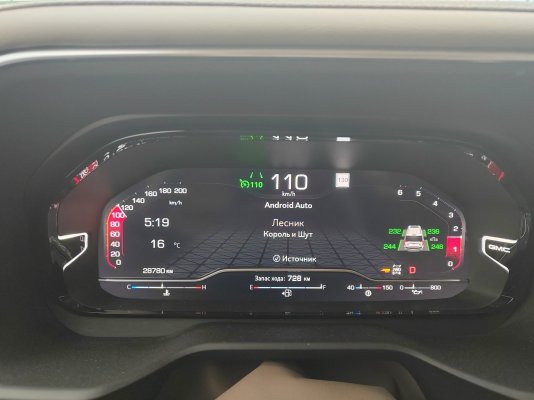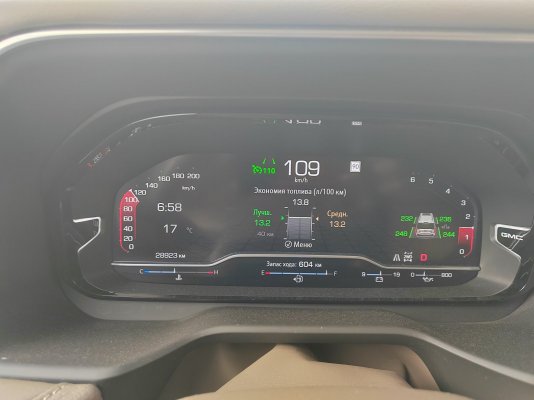I wouldn't say that. First we mentioned weight. You mentioned some ballast that doesn't exist. And how things 'look' heavier to you. I provided the sources to show a roughly 100lb difference. Then vlad mentioned how they are unreliable with other members chiming in to their mileage. Like i said i don't know what point your making or vlad is making ? Seems like you compare everything to the expedition and don't have any real experience with the new platform. Vlad I believe has a 6.2 so at least he has some skin in the game.
Either way looks like the lm2 is considerably more reliable then the 6.2 as it currently stands. The trucks have had the engine a bit longer then the yukon and long term outside of warranty reliability is also promising. I think vlad is based in Russia so id imagine lm2 parts are a bit harder to come by there than 6.2 v8 parts so that's probably also taken into consideration.
OP chose the 6.2 so that ship has sailed. Obviously people chose the powerplant based on their own needs so it's not one size fits all. Thankfully we have the choice.
To each their own I suppose.
Yes, I have 6.2 and I am in Russia, we have no problems with spare parts, even custom-made rare items arrive in 3-4 weeks, and we have plenty of consumables. As for the 6.2 engine, yes, our service masters know this engine well, they know its problem. In fact, with proper control of the oil level, and these engines die because the oil there goes to zero. There are many nuances of this motor. If you want it to walk for a long time, always warm it up for at least 5 minutes, and even in summer, in winter longer. Keep the radiators clean, do not overheat or run cold. Change the oil on time...and most importantly, listen to the engine. Major problems with him do not happen suddenly.
Extraneous noises, a sharp sudden oil consumption always appear first. And on this engine, the oil level must be checked every 1000 km. Rough idle appears. All this can be identified, and the service learned how to change consumables in advance by about 100-150 thousand km, avoiding serious consequences. And that preventive repair does not cost a lot of money. Around $1000-1500.
And then this engine can go happily ever after without any problems.
As for the new diesel engine, I’ll pretend it’s not the question, but the question is that most often when a urea system, which in the USA is called DEF, appears in a diesel engine, it reduces the reliability of the units. Yes, it seems like you said a simple nozzle, but, unfortunately, either the samak system has not been finalized, or it has not been adapted for cars for personal use, or there is a banal optimization of spare parts compared to similar systems on commercial vehicles. But the fact remains, the system begins to take out the brains of the owners on a run of about 100 thousand km, then blocking the engine.
At the same time, I really sincerely do not understand the fanaticism with which some prove the super abilities of a diesel engine. Well, they don't, objectively. I understand when it comes to a tractor or a Truck or a Bus ... but even for a Tahoe / Yukon car. The lower consumption is offset by higher purchase and maintenance costs. I understand that for the US, a diesel engine in this class from GM is a novelty, against the backdrop of rising fuel costs.
I saw this boom in diesel from the side when I bought Yukon in the USA. When the price of diesel cars was clearly higher in the secondary market, and 6.2 was thrown off with a good discount. It was a sin not to take advantage of such a situation. At the same time, even if we compare approximately the same operation of the car. This is the transportation of a boat by a trailer, weighing 1.5 tons.
It doesn't really matter how you carry it. I drove this boat on several cars. On a Chevrolet Tahoe K2XX with a 6.2 engine, the consumption was 15 liters per 100 km. Then I drove it to the Yukon 6.2 ... the same 15 liters per 100 km ... I drove it in a Diesel Mercedes GLS 350 and count it up. .there was also a consumption of 15 liters)))) Then I drove this boat in the car of my brother KIA Sorento with a 2.2d engine, and there the consumption was .... again the same 15 liters per 100km))) and even when I I drove my father to a Volvo v90 with a 2.0 turbo gasoline engine ... the same 15 liters)))
Why am I doing all this? and besides, modern diesel and gasoline engines have long become so close to their characteristics that you can easily get a consumption comparable to both 3.0 and 6.2. Why? because both of them are carrying a box weighing 3 tons the same +/-.
Uff... it turned out a lot)))


